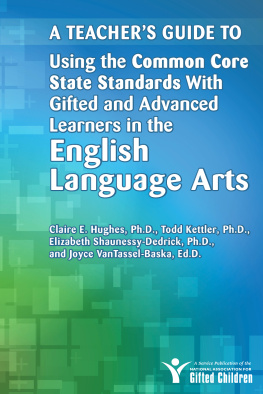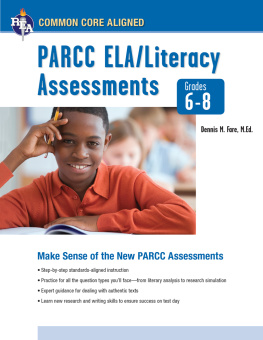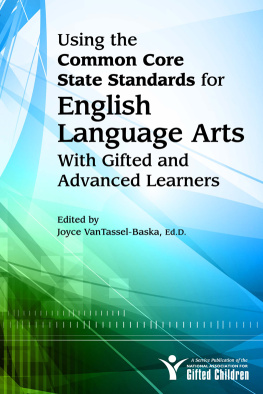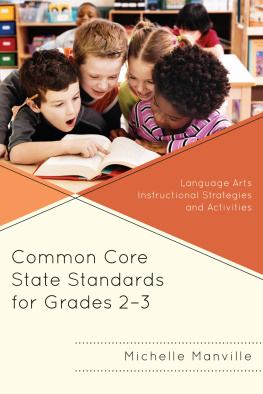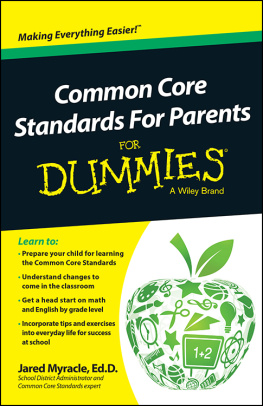Contents
Guide
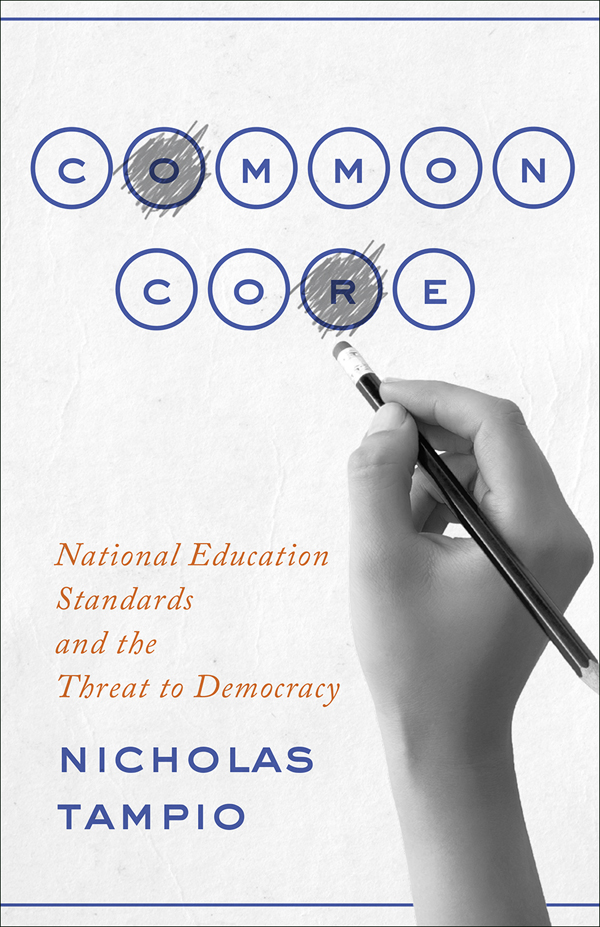
Common Core
COMMON CORE
National Education Standards and the Threat to Democracy

Nicholas Tampio
Johns Hopkins University Press
Baltimore
2018 Johns Hopkins University Press
All rights reserved. Published 2018
Printed in the United States of America on acid-free paper
9 8 7 6 5 4 3 2 1
Johns Hopkins University Press
2715 North Charles Street
Baltimore, Maryland 21218-4363
www.press.jhu.edu
Library of Congress Cataloging-in-Publication Data
Names: Tampio, Nicholas, author.
Title: Common core : national education standards and the threat to democracy / Nicholas Tampio.
Description: Baltimore : Johns Hopkins University Press, 2018. | Includes bibliographical references and index.
Identifiers: LCCN 2017019813| ISBN 9781421424637 (hardcover : alk. paper) | ISBN 1421424630 (hardcover : alk. paper) | ISBN 9781421424644 (electronic) | ISBN 1421424649 (electronic)
Subjects: LCSH: EducationStandardsUnited States. | Education and stateUnited States. | Educational accountabilityUnited States. | Decentralization in governmentUnited States. | Central-local government relationsUnited States. | DemocracyUnited States.
Classification: LCC LB3060.83 .T36 2018 | DDC 379.1/58dc23
LC record available at https://lccn.loc.gov/2017019813
A catalog record for this book is available from the British Library.
Special discounts are available for bulk purchases of this book. For more information, please contact Special Sales at 410-516-6936 or specialsales@press.jhu.edu.
Johns Hopkins University Press uses environmentally friendly book materials, including recycled text paper that is composed of at least 30 percent post-consumer waste, whenever possible.
To my sons, Giuliano, Luca, Nicola, and Giorgio
Contents
Acknowledgments
I thank all of the parents, policymakers, educators, editors, journalists, and students with whom I have communicated about education in the past few years. Sigal Ben-Porath, Deborah Brooks, Barry Garelick, Michael Hynes, Andrew F. March, Patrick McGuinn, Amy Perruso, and Charles Tampio read draft chapters of the book. Fordham University awarded me a faculty fellowship in the fall of 2016 to complete the book. Greg Britton, David Goehring, and the outside reviewer have made the argument stronger with their advice and encouragement. I am grateful to everyone working behind the scenes at Johns Hopkins University Press.
My wife, Gina, and I have been talking about the ideas in this book since I wrote my first blog for the Huffington Post about the Common Core in 2012. In addition to editing my work, she fills our house with love, healthy food, and books. I want my sons, to whom this book is dedicated, to love to learn, write, speak, ask questions, make art, exercise, serve the community, appreciate nature, and think. My kids, and all kids, deserve an education that cultivates their joy and wonder.
Common Core
INTRODUCTION
Do We Need a Common Core?
I n the spring of 2012, my wife, Gina, worried that something had gone wrong in my sons public school kindergarten class. Gina told me that the Montessori-trained teacher was no longer using a play-based curriculum. Instead, she was making the kids sit on the carpet while she lectured to them.
I wrote to other parents in my sons class to ask if they had noticed a change in the classroom. Several parents responded with details about the transformation. Earlier in the school year, the teacher had taught children about famous painters such as Mary Cassatt, Norman Rockwell, or Pablo Picasso. Children would read about the artists, write about them in journals, give presentations to the class describing their lives, and paint in their styles. Or the teacher would introduce students to biology, having them collect acorns in the neighborhood, place them in soil in an aquarium, and, once the saplings had reached a certain height, plant them in the neighborhood while learning about the Kenyan environmental activist Wangari Maathai.
These kinds of hands-on education activities ended with the adoption of the Treasures reading program. The teacher now had to use preapproved curricula, assignments, and tests rather than make her own lesson plans or permit students to do free-choice activities. With other parents in the class, I wrote a letter to the principal detailing our concerns and asking her to stop the pilot program.
After receiving my letter, the principal invited me to her office. A veteran educator who would retire at the end of the year, she was friendly and forthcoming. She had installed a peace garden behind the school and seemed sympathetic to the principles of progressive education. But she told me that the Treasures reading program was aligned with the Common Core. Whats the Common Core? I asked. She said that it was a set of standards that identified what students should be able to know and do in English Language Arts (ELA) and math by the end of each school year. She said that the standards were internationally benchmarked and would prepare all children for college and careers.
That last claim raised a red flag for me. Our school district had excellent teachers and programs and regularly sent most graduates to college, including some of the most selective in the country. Why would we abandon what had led to our success? And how could any program claim to prepare all children to succeed in college and careers? Without a proven track record, this pitch for the Common Core seemed like what the tailors told the emperor when selling him his new robe.
After my meeting with the principal, I wrote a blog for the Huffington Post about my concerns with the Common Core. I argued that in a big, diverse country, we should not permit one organization or group of people to decide the educational mission for nearly all American public schools. We ought to encourage teachers to create lesson plans that interest the students before them, not follow scripted plans aligned to the Common Core standards. Educators should nurture each childs unique talents and interests, not focus on training students to take standardized testsan activity that people rarely do at selective colleges, creative jobs, or while participating in the life of the community. Like shooting a flare into the sky, I hoped that my essay would draw the attention of other people who saw problems with the Common Core.
Shortly thereafter, I began communicating with people across the country about the Common Cores impact on public education, Catholic schools, and the homeschool community. I exchanged emails with Christel Lane Swasey, a Mormon mother in Utah who helped launch a website where parents could strategize about fighting the Common Core. I met for coffee with Yvonne Gasperino, a mother who manages the Stop Common Core in New York State Facebook page, who told me how the Obama administration used Race to the Top to incentivize states to adopt the Common Core standards. I forged a friendship with Lisa Rudley, a founder of New York State Allies for Public Education (NYSAPE), a group composed primarily of liberal parents and educators concerned about the New York State Regents Reform agenda that includes the Common Core.
Over the next few years, I would give public talks on the Common Core with New York City public school teacher Jia Lee, New York State High School Principal of the Year Carol Burris, New York State Senator George Latimer, New York State Assemblyman Edward Ra, and many other superintendents, principals, educators, and parents. All of usRepublicans, Democrats, and independents; in cities, suburbia, and rural areas; education progressives and education traditionalistshave negotiated our differences to collaborate in stopping the Common Cores transformation of our schools.


